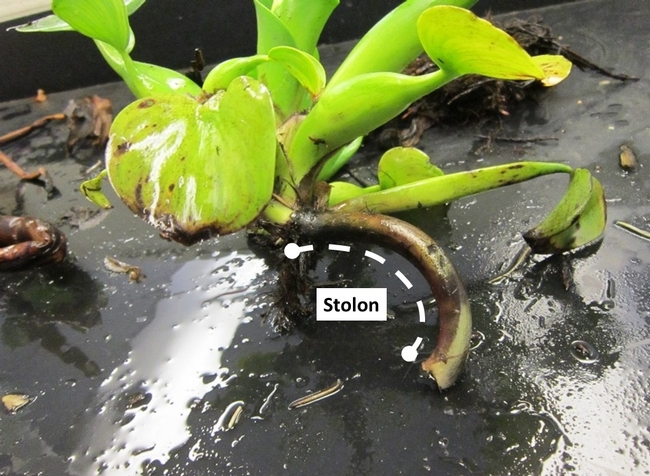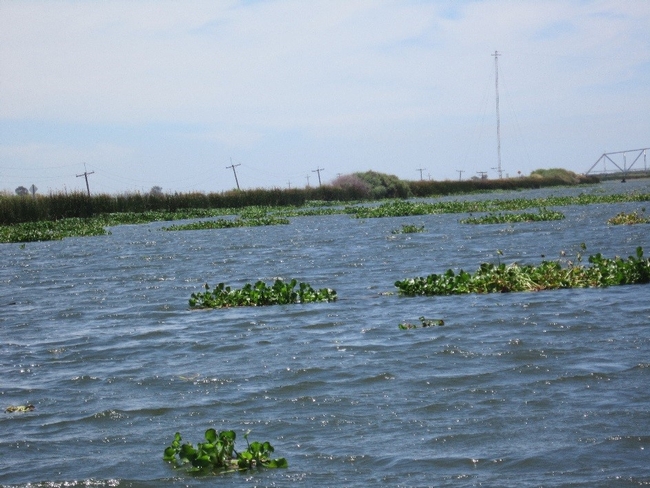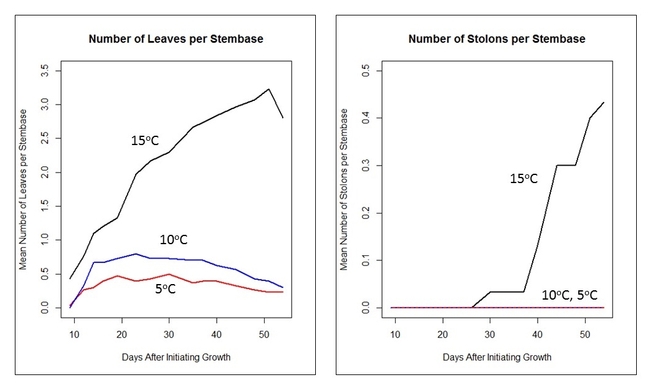Waterhyacinth (Eichhornia crassipes) is a floating perennial species that has become a serious management issue as it invades aquatic ecosystems around the world. In the Sacramento-San Joaquin Delta in California, the species forms large, dense mats on the water surface that inhibit boating, fishing, water access, and decrease light availability below the floating mat.
While the leaves of waterhyacinth generally turn brown and die during the winter, many waterhyacinth plants survive the winter and grow new leaves in the spring. Warmer spring temperatures also cause the plants to grow stolons, or spreading stems, from which daughter plants grow (Figure 1). Stolon growth is a key driver of waterhyacinth dispersal. Daughter plants growing from stolons expand plant mats away from banks, where forces such as tidal movement, wind, water flow, or boats cause portions of mats to break away and disperse (Figure 2).


In 2016, we performed a study to test how three different water temperatures affect waterhyacinth leaf and stolon growth. Plants were grown in growth chambers in one of three water temperature regimes [5°C (41°F), 10°C (50°F), or15°C (59°F)].
Plants grown at 15°C developed roughly 9 times as many leaves as plants at 5°C or 10°C (Figure 3). After 54 days at 15°C, an average of 2.8 leaves grew on each stembase, while an average of 0.2 leaves grew on each stembase at 5°C and 0.3 leaves grew on each stembase at 10°C. This increased leaf growth at the higher water temperature decreases light availability in the water column below the plant mat.
At 54 days, no stolons grew on plants in 5°C or 10°C water, while 40% of plants at 15°C were developing stolons - thus beginning to produce daughter plants.
With greatly reduced leaf and stolon production at 5°C and 10°C, waterhyacinth would disperse at a far lower rate, and would be easier to manage than the plants exposed to 15°C. This understanding of specific water temperature's effect on leaf and stolon production can help identify locations that may be susceptible to invasion and allow managers to allocate resources accordingly. It will also allow for better timing of management, before established populations begin rapid dispersal to new locations.
John Miskella is a biological technician with the USDA-ARS Aquatic Weed Laboratory, UC Davis, CA.
